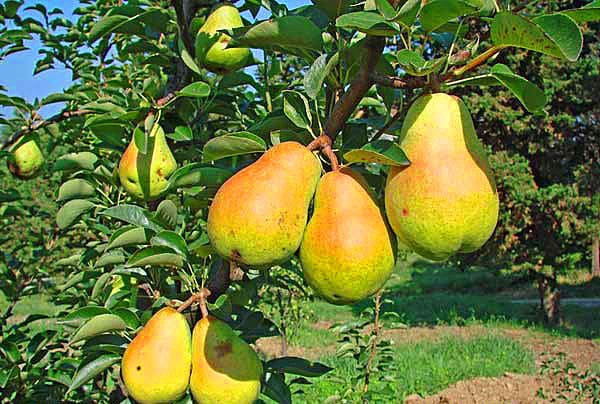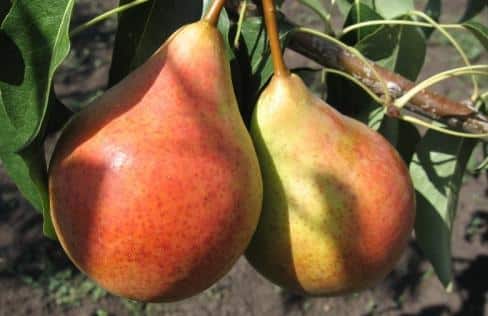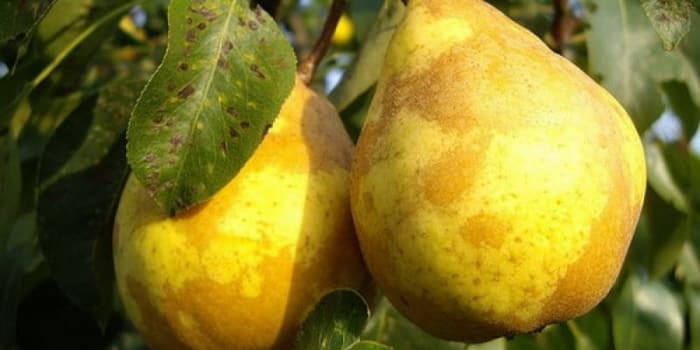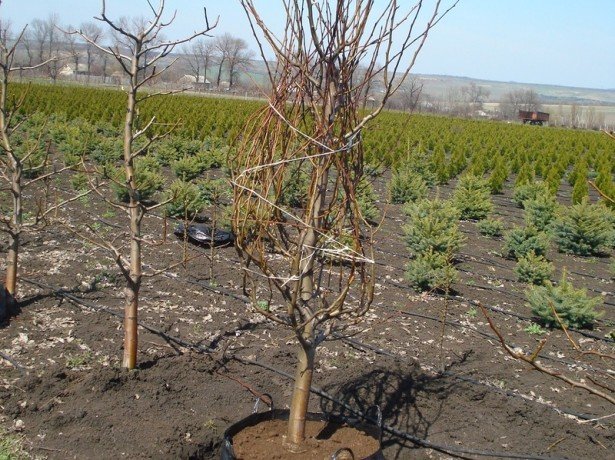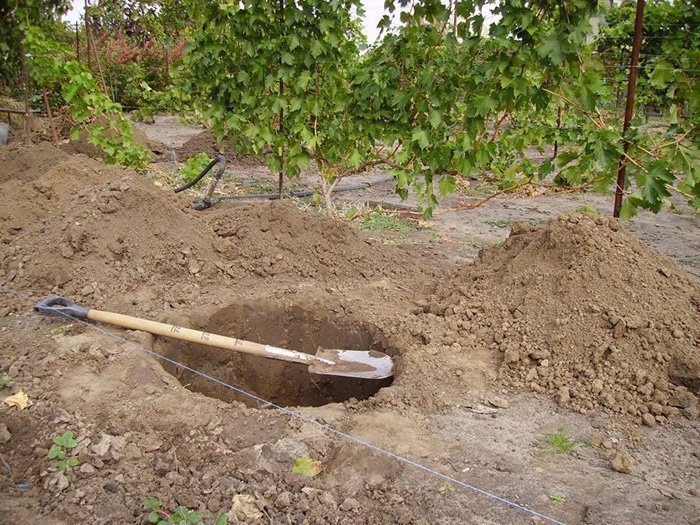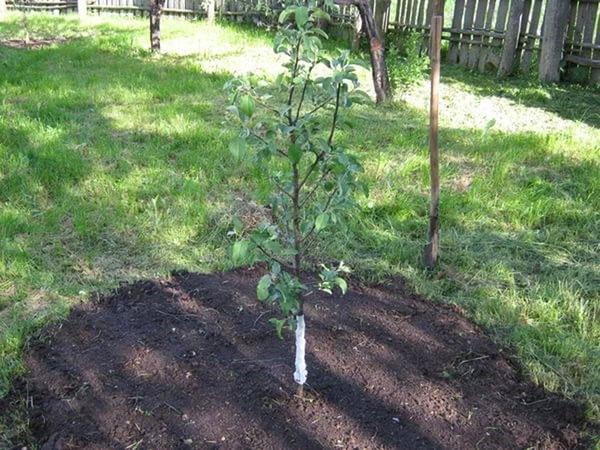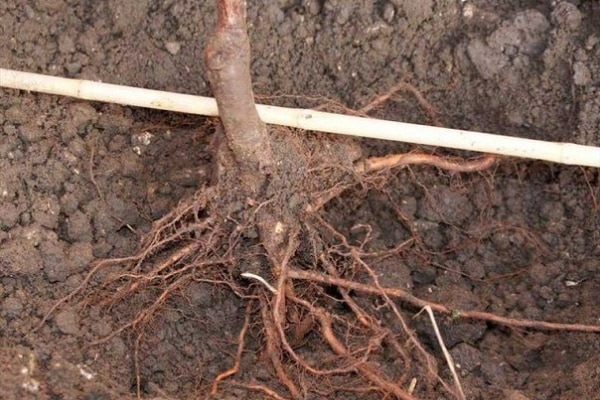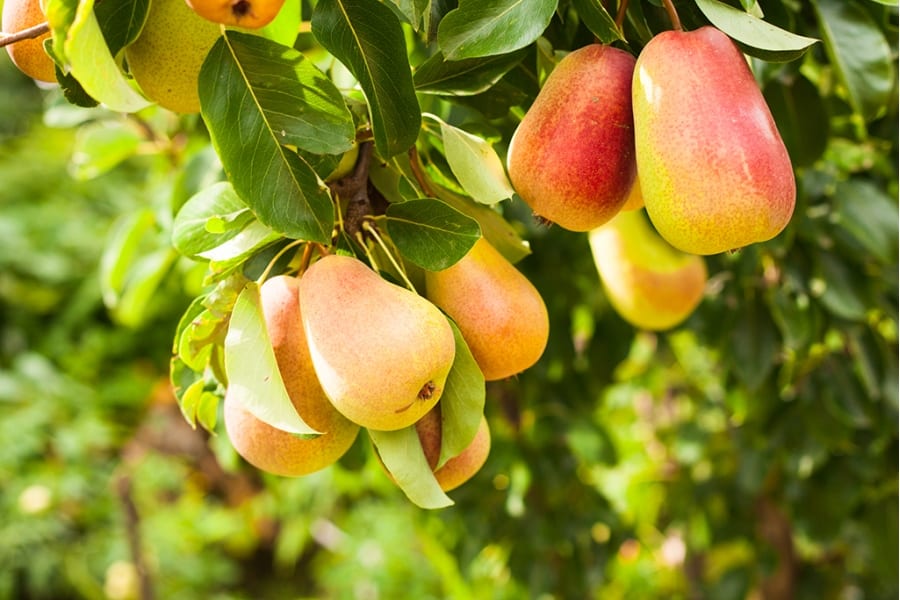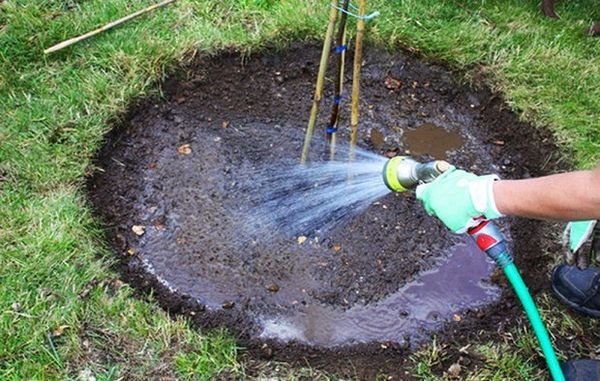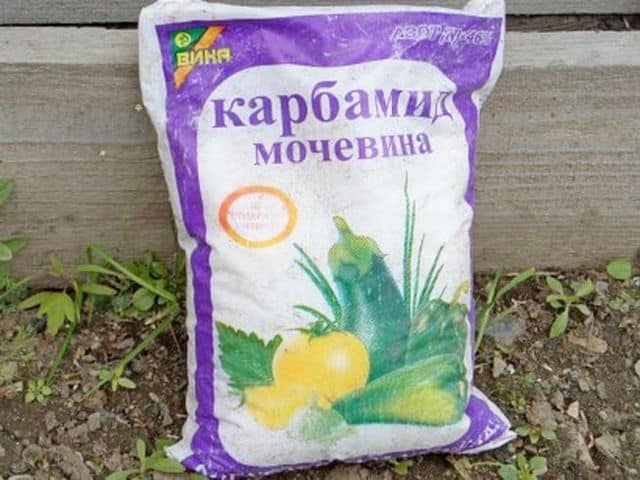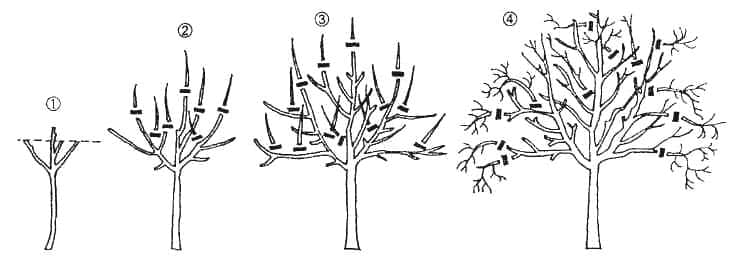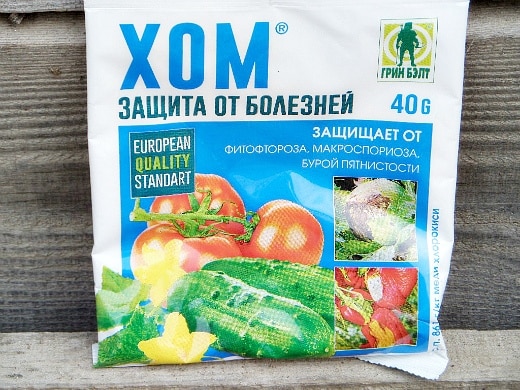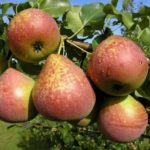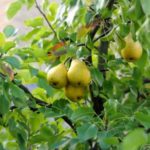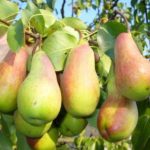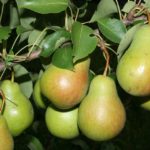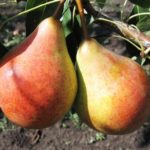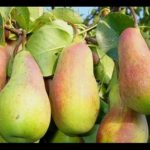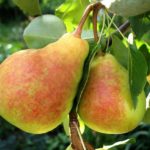The Duchess pear variety is most often found in summer cottages. This is a productive and unpretentious variety, which many summer residents immediately fell in love with. The fruits of the variety are tasty and versatile in use. The only negative is low frost resistance.
- Description and characteristics of Duchess pear
- Variety varieties
- Summer Williams pear
- Winter Williams variety
- Red Williams
- Advantages and disadvantages
- Features of growing a tree
- When to plant a pear
- Lighting requirement
- Choosing a site for planting and preparing the hole
- Distance between seedlings
- Landing technology
- Tree pollinators
- Plant care rules
- Watering
- Feeding pears
- Mulching
- Rejuvenation
- Preparing for winter
- Diseases and pests
- To which regions is the variety more adapted?
- Harvesting and storage
Description and characteristics of Duchess pear
The Duchess variety has many varieties, such as Rouge Delbara, which is often found in markets. Before buying a pear variety, it is important to study the description and characteristics of the plant, as well as the fruit.
Variety varieties
There are two main varieties of the Duchess variety (also called Williams) - summer and winter. Any hybrids that were created from the Duchess variety are divided into these two types.
Summer Williams pear
Winter hardiness of the summer variety is average. There is also low resistance to diseases and insects. The fruits are usually set in 2-3 pieces, tightly attached to the stalk. The weight of the pear is average and is about 85-190 g. The shape of the fruit is pear-shaped, the head is oblong.
The peel is dense, rough, lemon-colored. The flesh is creamy. The taste of ripe fruits is sweet, with a slight spicy aftertaste. The harvest ripens by August. Up to 250 kg of crop is harvested from one tree.
Winter Williams variety
Winter variety William is characterized by a tall, branched tree with a wide crown. The crown shape is pyramidal. The leaves are dark green in color and grow in bunches or individually. The shade of ripe fruits is rich yellow, the flesh is white, soft and very juicy. There is a slight sour taste. The skin is smooth. Harvest in October. Up to 100 kg of fruits are collected from one tree.
Red Williams
Red Williams is considered one of the most unusual varieties of pears. And all thanks to the shade of the fruit. The peel is a rich wine color. This variety is also called Rouge Dulbara. But not only the fruits of the variety are red, the trees have red bark and young leaves.
The tree is low-growing, the crown is not thickened. Resistance to drought and frost is average.The tree begins to bear fruit in the 5th year after planting the seedling. Pear ripening begins in the second ten days of August. The pulp of the fruit is juicy, tender, with a pleasant nutmeg aroma. Ripe fruits of medium size. After harvesting, they are stored until winter.
Advantages and disadvantages
The advantages of the variety include:
- High yield.
- Massive ripening of fruits.
- Taste qualities.
- Stable yield.
- Universal use.
- Can be grown in any region.
- The fruits are stored for a long time.
Disadvantages include low resistance to diseases and pests, drought and frost. In addition, the variety is self-sterile, which is also a disadvantage of the Duchess pear.
Features of growing a tree
Growing a pear is practically no different from growing other fruit trees. It is important to pay attention to the technology of planting seedlings and caring for the tree. You need to decide in advance on the timing of planting and prepare the soil for planting the seedling.
When to plant a pear
Seedlings can be planted twice a year - in spring and autumn. Autumn planting is considered the most favorable. Its advantage is that over the winter the pear will have time to take root in a new place, and in the spring it will begin to grow actively. Also, when planted in spring, seedlings often begin to bloom in the same year, which is undesirable to allow.
If it is not possible to plant a tree in the fall, you can plant it in the spring. Many summer residents prefer spring for planting, since the seedling will not have to go through the winter immediately after planting, because over the summer the pear will get used to the new place.
In autumn, pears are planted in September-October, and in spring - in April-May.
Lighting requirement
Pear prefers to grow in open sunny areas. The main thing is that the place is protected from the wind. It is not recommended to plant a tree in lowlands.If there is no other place, the seedling is planted in partial shade. It's good if he stays in the sun most of the time. It is not advisable to plant pears in the shade. The tree will grow poorly and produce a poor harvest due to lack of sunlight.
Choosing a site for planting and preparing the hole
Pear prefers to grow on black soil, loamy or sandy loam soils. Light fertile soils are suitable for seedlings. The plant is not picky about soil composition. 2-3 weeks before planting the plants in the soil, prepare a hole. To do this, dig a hole to a depth of 1 m and a width of 80 cm. The top layer of soil is mixed with manure, wood ash and mineral fertilizers. Then they fill the bottom of the hole with it. After 3 weeks they begin planting.
It is not advisable to plant a pear tree too close to other trees. The minimum distance should be 3 m between each tree.
Distance between seedlings
If the distance from other fruit trees in the garden needs to be left large, then distance between pears can be reduced. 1.5 m between adjacent trees is enough. If the pears grow close to each other, this will increase the pollination of the trees, and, accordingly, the yield.
Landing technology
The process of planting pear seedlings is practically no different from planting other fruit trees.
The process of planting a pear in a permanent place consists of several stages:
- Drive a stake into the center of the hole.
- Place the seedling in the hole and carefully straighten the roots.
- Fill the hole with soil and compact the soil near the trunk.
- Tie the seedling to a stake.
At the end of planting, water the seedling generously with warm water. It is recommended to plant seedlings in warm, windless weather.
Tree pollinators
Both the winter and summer varieties of Duchess pear are self-fertile varieties, so pollinator trees will have to be planted nearby. The best pollinators include the following varieties:
- Williams;
- Olivier de Serres;
- Bere Ardanpon.
These varieties are suitable for winter variety. For a summer variety, the best pollinators are:
- Clapp's favorite;
- Bere Ardanpont;
- Forest Beauty.
Pollinator trees should be planted at a distance of 2-3 m.
Plant care rules
Minimal pear care includes watering, fertilizing, loosening the soil and removing weeds, as well as pruning the tree. These procedures will be enough to maintain the health of the plant.
Watering
The plant does not need frequent watering. It is enough to moisten the tree 4 times per season:
- The first watering is carried out during the swelling of the buds.
- The pear is irrigated a second time when the flowering period begins.
- The third watering is carried out during fruit filling.
- The plant is moistened for the last time before the onset of frost.
2 buckets of water are enough for one tree. Watering is allowed with warm, sun-warmed water.
Feeding pears
Without additional fertilizers added to the soil, the plant will grow poorly and yields will decrease. Fertilizing is applied 4 times per season. If necessary, increase the amount of fertilizer.
Autumn feeding:
- Potassium chloride (1 tbsp), superphosphate (2 tbsp) and 10 liters of water. Water at the root.
- Urea (1 tbsp.), superphosphate (2 tbsp.), wood ash (550 g), phosphate rock (1 tbsp.), ammophosphate (2 tbsp.), potassium chloride (1 tbsp. l.).
In spring, pears are fed with saltpeter, chicken manure and urea. Fertilizers are applied until the buds appear.
Mulching
The soil is mulched in the fall.Peat, sawdust, chopped weeds without roots or straw are used as mulch. The mulch layer should not be less than 15 cm. Mulch not only protects the rhizome from frost, but also saturates the soil with micronutrients. You need to mulch the soil in the fall every year.
Rejuvenation
The pear tree is pruned twice per season - in spring and autumn. In autumn, sanitary pruning is carried out, when dry and damaged branches are removed. In spring, rejuvenating pruning is carried out. Trees are shortened by 1/3 of the entire length. Then the branches growing towards the bottom are cut off. From each pair of closely spaced branches, one is cut off. 7 skeletal branches are left on the lower tier. Dry branches are trimmed. At the forks of the branches, the lower shoots are cut off. These measures will be enough to rejuvenate the old plant.
Preparing for winter
Before the onset of winter, the soil around the trunk is mulched. And the lower part of the trunk is covered with durable material so that mice do not gnaw the bark.
Diseases and pests
Most often, Duchess is affected by scab. But other diseases can often be found on the tree. To prevent scab, the plant is treated with Bordeaux mixture 3 times per season. The first time is when the leaves begin to appear. The second time is during flowering. The last one is when flowering ends. Another common disease is moniliosis. For prevention, trees are sprayed with Bordeaux mixture and the preparation "Hom". Dry branches are also trimmed regularly.
Among the insects found on pears are:
- leaf roller;
- mites;
- aphid;
- codling moth.
For harmful insects, the preparation “Tsimbush”, “Agravertin” and acaricides are used. Spraying with a decoction of dandelion or chamomile helps a lot. A solution of laundry soap or an infusion of mustard powder helps against aphids.
To which regions is the variety more adapted?
Due to low resistance to frost, it is not recommended to plant the Duchess variety in the northern regions. The tree may not survive severe frosts. The most favorable areas for cultivation are considered to be the southern, as well as the central part of Russia and the Volga regions. The main condition for planting a seedling is the absence of severe frosts in winter.
Harvesting and storage
Depending on the variety of Duchess pear, the harvest begins from August to October. It is recommended to collect the fruits before they fall. The harvested crop is stored in a cool, dark place. The winter variety can last until December.

